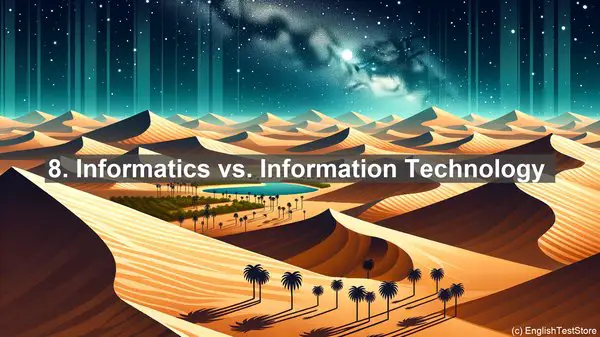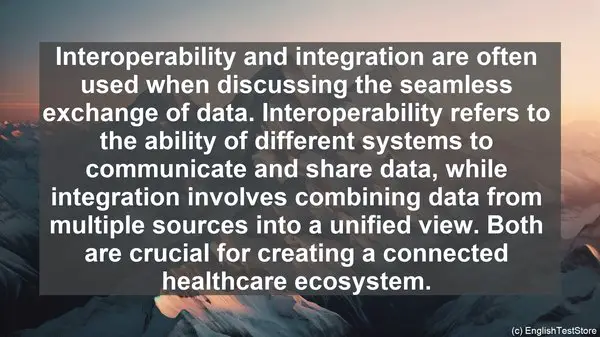Introduction
Welcome to today’s lesson on the top 10 commonly confused words in Health Informatics. As the field continues to evolve, it’s essential for us to have a clear understanding of these terms. So, let’s get started!
1. Data vs. Information
While these terms are often used interchangeably, they have distinct meanings. Data refers to raw facts or figures, whereas information is the processed and organized form of that data. In Health Informatics, we collect vast amounts of data, but it’s the transformation of that data into meaningful information that drives decision-making and improves patient care.
2. EHR vs. EMR
Electronic Health Records (EHR) and Electronic Medical Records (EMR) are similar, but there’s a subtle difference. An EMR contains a patient’s medical history from a single practice, while an EHR includes a more comprehensive view, integrating data from multiple sources. EHRs are designed to be shared across different healthcare settings, ensuring continuity of care.
3. Interoperability vs. Integration
Interoperability and integration are often used when discussing the seamless exchange of data. Interoperability refers to the ability of different systems to communicate and share data, while integration involves combining data from multiple sources into a unified view. Both are crucial for creating a connected healthcare ecosystem.
4. Accuracy vs. Precision
In Health Informatics, precision refers to the level of detail or granularity, while accuracy relates to correctness. For example, when documenting a patient’s weight, a precise measurement would include decimal points, while an accurate measurement would be free from errors. Both precision and accuracy are vital for maintaining data integrity.
5. Telehealth vs. Telemedicine
While these terms are often used interchangeably, there’s a subtle distinction. Telehealth is a broader term that encompasses remote healthcare services, including patient monitoring and education. Telemedicine, on the other hand, specifically refers to the diagnosis and treatment of patients using telecommunications technology.
6. Privacy vs. Security
In the context of Health Informatics, privacy and security are two essential aspects of data protection. Privacy focuses on the appropriate use and disclosure of data, ensuring that patients’ personal information is kept confidential. Security, on the other hand, involves safeguarding data from unauthorized access or breaches. Both are critical for maintaining patient trust.
7. Clinical Decision Support vs. Clinical Decision Making
Clinical decision support (CDS) systems provide healthcare professionals with evidence-based information and recommendations to aid in decision making. Clinical decision making, on the other hand, is the process of selecting the most appropriate course of action based on various factors, including patient history and clinical guidelines. CDS systems can enhance the efficiency and accuracy of clinical decision making.
8. Informatics vs. Information Technology
Informatics and information technology (IT) are related but distinct fields. Informatics focuses on the use of technology and data to improve healthcare outcomes and processes. IT, on the other hand, encompasses the broader management and maintenance of technology systems. In Health Informatics, both fields work together to drive innovation and efficiency.

9. Big Data vs. Small Data
Big data refers to the vast amounts of complex and diverse data that cannot be easily managed or analyzed using traditional methods. Small data, on the other hand, refers to data that is more manageable in size and often has a specific focus. Both types of data have their uses in Health Informatics, with big data offering insights at a population level and small data providing more granular details.
10. Usability vs. User Experience
Usability and user experience (UX) are key considerations when designing health informatics systems. Usability focuses on how easily a system can be used and navigated, while UX encompasses the overall experience and satisfaction of the user. Both aspects are crucial for ensuring that technology is intuitive and enhances, rather than hinders, workflow.

